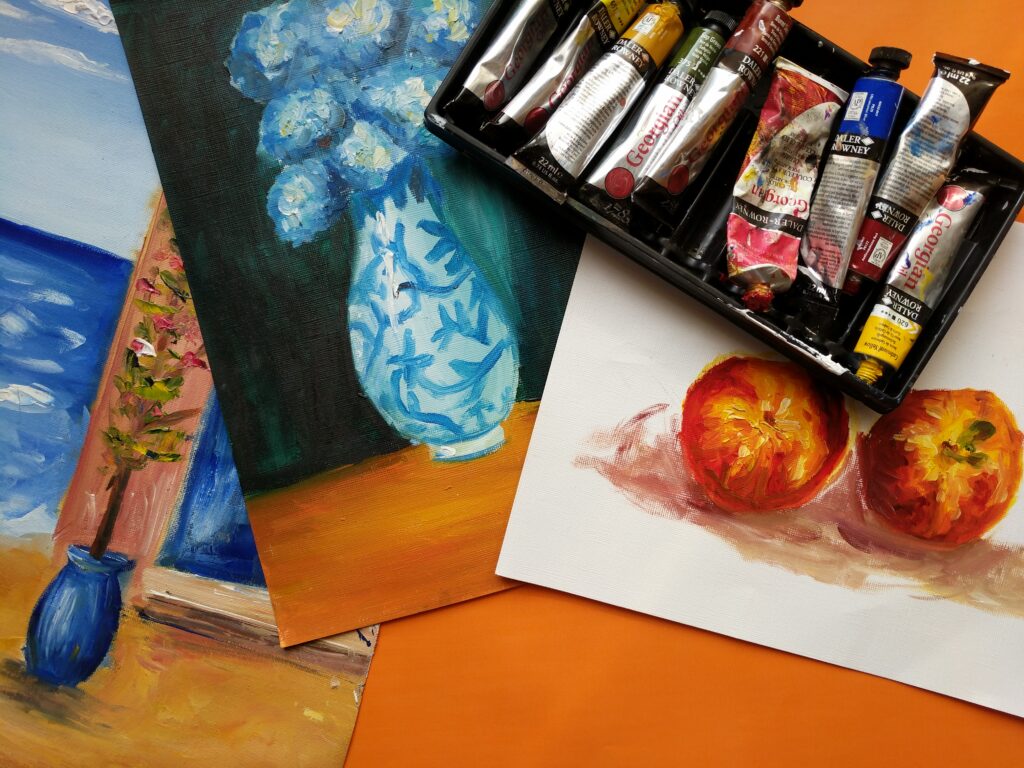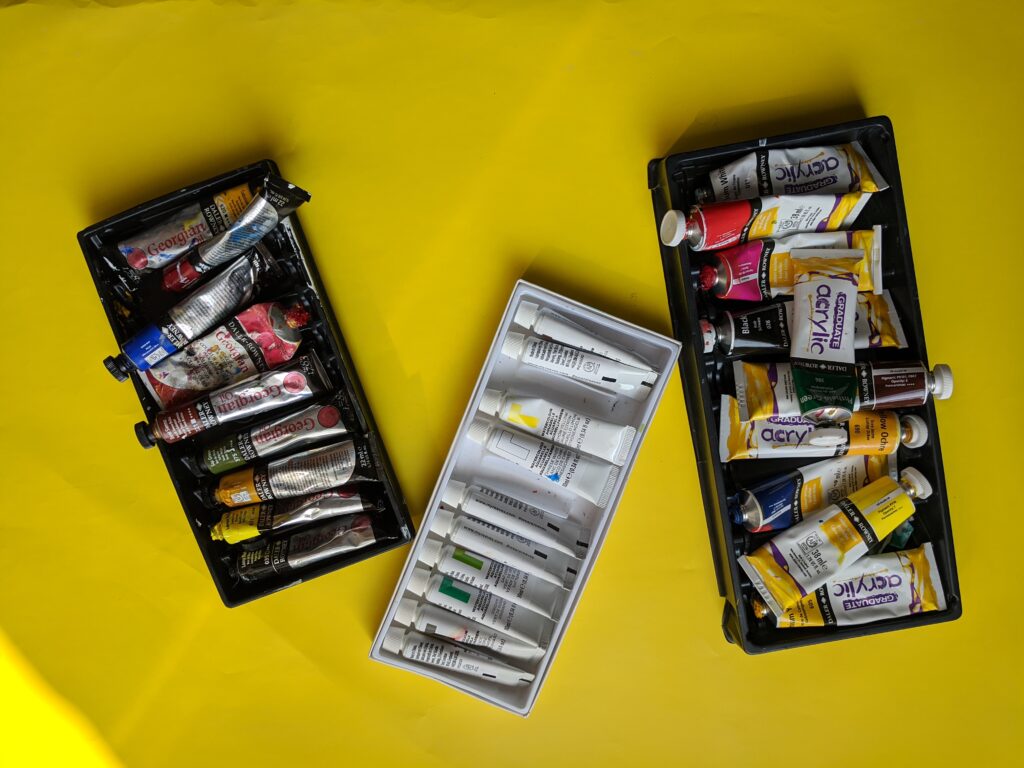Understanding the Difference Between Oil and Acrylic Paints
One of the most common questions I receive as an art teacher is, “What is the difference between oils and acrylic paint?” So, to preface, I prefer to use oil paints when creating my artwork. Its luscious pigments and slow drying time are what I love about oils.
But they are very different paints and have different properties and so depending on your personality, and sometimes even your mood you may find you prefer one over the other. When teaching, I prefer to start students off with learning acrylics as it’s much more forgiving than oil paints. With its slow drying time and ability to paint in layers quickly, it’s easier to use and practice color mixing and the process of painting on canvas. Once students have mastered these skills, I then teach them oil paints. I like my students to get a good understanding of a variety of art mediums, as just as God made us all different, so too, we prefer different art mediums.
I have started students on oil paints as young as eleven, and I started painting with oils when I was ten. Once a student has mastered how to mix, blend, and use acrylic paints, you can move on to oil paints and teach them the different properties of oils.

In this exploration, we delve into the differences between oil and acrylic paints, so you can know which one you might prefer to use.
1. Drying Time: The Race Against Time
Oil Paints:
- Slow and Patient: One of the defining characteristics of oil paints is their slow drying time. This allows artists to work on a piece for an extended period, blending colors and creating intricate details without the rush.
Acrylic Paints:
- Quick and Versatile: Acrylic paints, in contrast, dry relatively fast. This can be advantageous for artists who prefer a quicker turnaround and the ability to layer colors swiftly.
2. Mediums and Solvents: The Alchemical Mix
Oil Paints:
- Traditional Oils: Typically, artists use turpentine or mineral spirits as solvents for oil paints. Additionally, they can employ various mediums to alter the consistency and drying time, such as linseed oil or stand oil.
Acrylic Paints:
- Water and More: Acrylic paints are water-based, making them easy to clean with water alone. Artists can also use acrylic mediums to modify the texture, thickness, and drying time of the paint.
3. Layering and Blending: The Art of Fusion
Oil Paints:
- Unmatched Blending: The slow drying time of oil paints allows for seamless blending of colors on the canvas. This makes them ideal for creating smooth transitions and intricate details.
Acrylic Paints:
- Quick Layering: Acrylics, with their fast-drying nature, are better suited for artists who prefer to layer and build quickly. However, artists must work swiftly to blend colors before the paint sets.
4. Surface and Texture: From Grit to Gloss
Oil Paints:
- Rich and Textured: Oil paints are known for their rich, textured finish. Artists can build up layers, creating a sense of depth and complexity on the canvas.
Acrylic Paints:
- Versatile Surfaces: Acrylics can adapt to a variety of surfaces, from canvas to paper to wood. The final texture depends on the artist’s technique and the medium used.
5. Color Shift: The Evolution of Hues
Oil Paints:
- Consistent Colors: The colors in oil paintings tend to stay true over time, with minimal color shifts as the paint dries.
Acrylic Paints:
- Possible Color Shift: Acrylics may experience a slight color shift as they dry. Artists should consider this factor when selecting their color palette.
6. Flexibility and Crack Resistance: The Test of Time
Oil Paints:
- Flexible and Durable: Oil paintings are known for their flexibility and durability over time. The slow drying process contributes to reduced cracking.
Acrylic Paints:
- Flexible but Prone to Cracking: While acrylics are generally flexible, rapid drying can lead to cracking if not handled properly. Using a flexible surface and mediums can help mitigate this.

Conclusion:
In the grand tapestry of artistic expression, the choice between oil and acrylic paints is a deeply personal one. Whether you prefer the slow, contemplative dance of oils or the quick, dynamic strokes of acrylics, each medium offers its own set of challenges and rewards. So, which one will you try?
Ready for a challenge? Take our free 5 day art challenge:
Interested in online kids and teens art courses: Join the waitlist here:


Hi, this is a comment.
To get started with moderating, editing, and deleting comments, please visit the Comments screen in the dashboard.
Commenter avatars come from Gravatar.